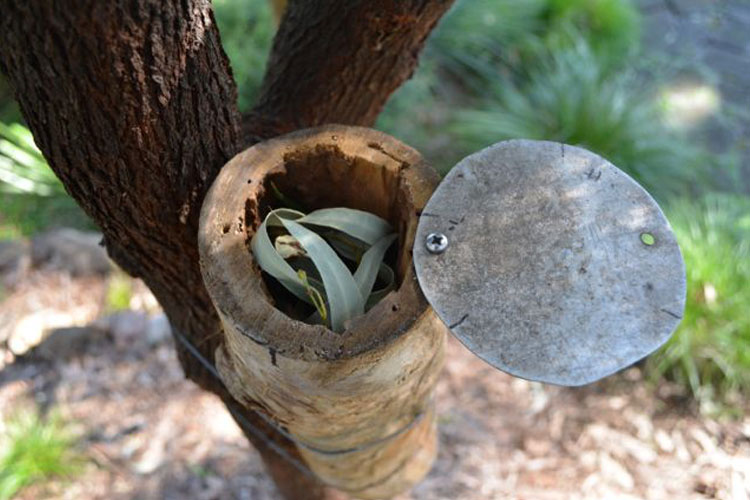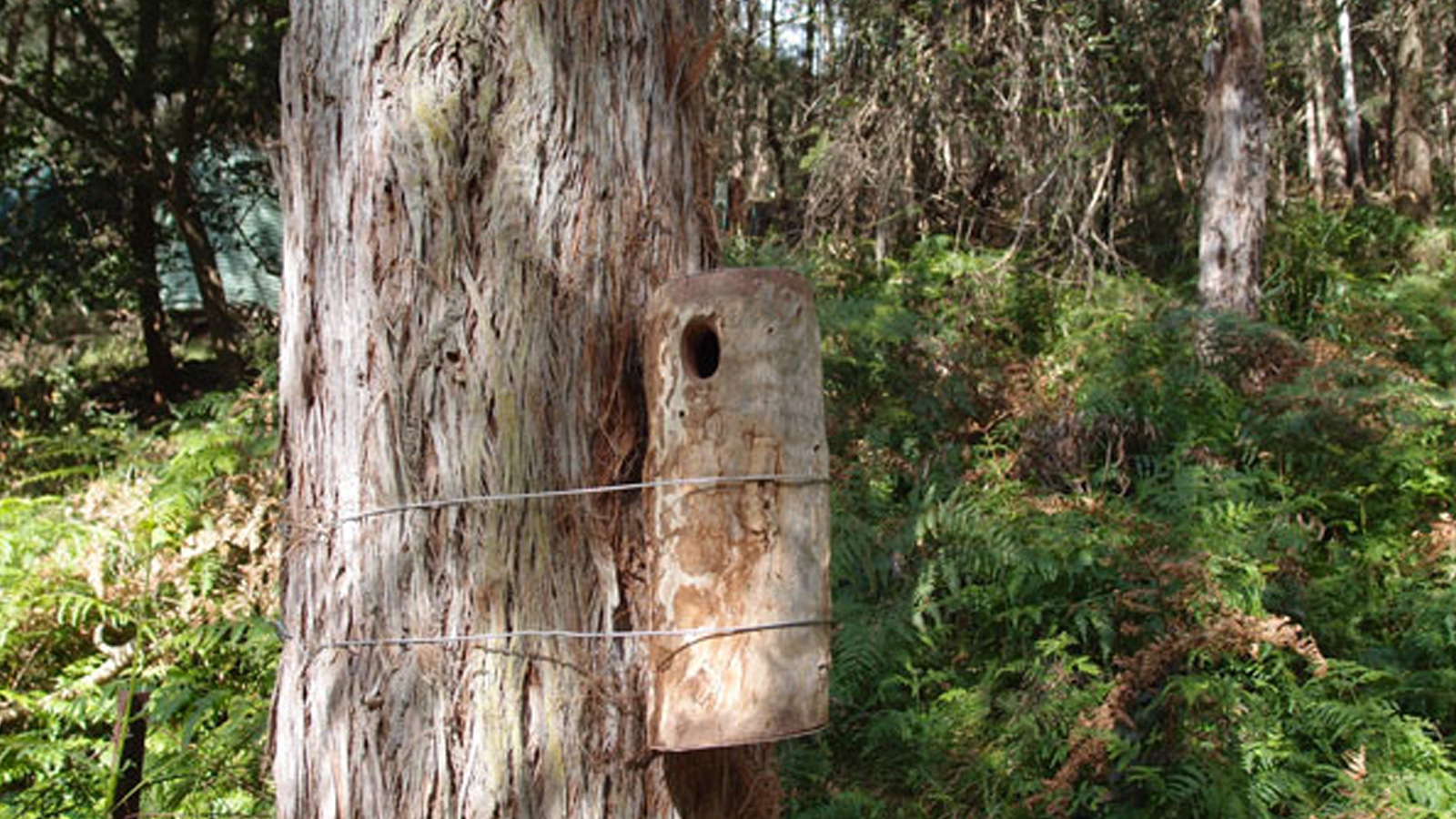Nesting boxes — not only Pygmy Possums
Ostensibly Alf Britton works part-time for the Forestry Corporation of NSW in the Strickland State Forest near Narara on the Central Coast. Practically Alf works for the environment, conserving and regenerating this beautiful stretch of bush and keeping a watchful on eye on its inhabitants. Alf now has made and placed over 100 nesting boxes in this forest. He gets a lot of Pygmy Possums visiting but also Feather-tailed Gliders and Antechinus
The Box
Alf’s nesting boxes are made from a variety of native timbers including bloodwood, tallowwood, ironbark and stringybark using the natural elements occurring in the timber. The box has a swing lid, fastened by a metal pin. The bottom is held in place by 2 screws.
Preparing the box
Use a knife and gently scrape the bark of a causurina, kunzea ambigua, banksia or any rough barked eucalypt to make a bed of fine bark scrapings about 1 cm to 1.5 cm deep to cover the metal on the bottom. Alternatively you could use dry finely crumbled bark from the forest floor.
Placing the box
If you have a native garden choose the trunk of a rough-barked tree or eucalypt. If placing the box by yourself take a couple of occy straps as well as strong wire and wire cutters.
Place the box on the trunk at a height suitable for viewing, with the entry hole near to the trunk so the possum can quickly access the nest box. Affix it in place with your two occy straps. Now test your ability to open the box for viewing before proceeding. Also judge your ability to open the bottom which you may have to do if you have an ant attack. Once you have confirmed your ability to open both ends – proceed.
Measure out sufficient wire to circle the box and trunk and tie. Always be watchful for ‘wire whip’ as you cut the wire. Place the first wire approximately 3 cm from the bottom of the box and tighten around the box and tree. Repeat for the second wire which should be placed approx 1 cm below the access hole. Don’t be worried about the wire harming the tree. The wire will rot off in a year or so and will have to be replaced. You can make adjustments for tree growth then.
Who will use it?
Your most likely lodgers will be a Feathertailed Glider a Pygmy Possum or a Brown Antechinus. Your lodgers will move in and out frequently so you may not actually see them in residence but you can tell who has been there by the nest they build. The Feathertailed Glider will bring in green eucalyptus leaves for a nest. Lots of them! An Antechinus will bring in dried eucalyptus leaves. The Pygmy Possum will bring in green leaves or half leaves of anything else. Sometimes you might see a small birds nest – maybe a Pardalote.
But the nest box could also attract huntsman, ants and geckos. An open lid for a day or two should put off the huntsman. If it attracts ants – it is time to unscrew your bottom and leave it open for a week. Then rebuild your nest and start again.
Viewing your Lodgers
Take a torch. Swing open the top and peer in. Go home and write down what you saw.
Do this once a week. Once a month we would love you to post your sightings to the dropbox. Details will be coming soon on how this will operate.

